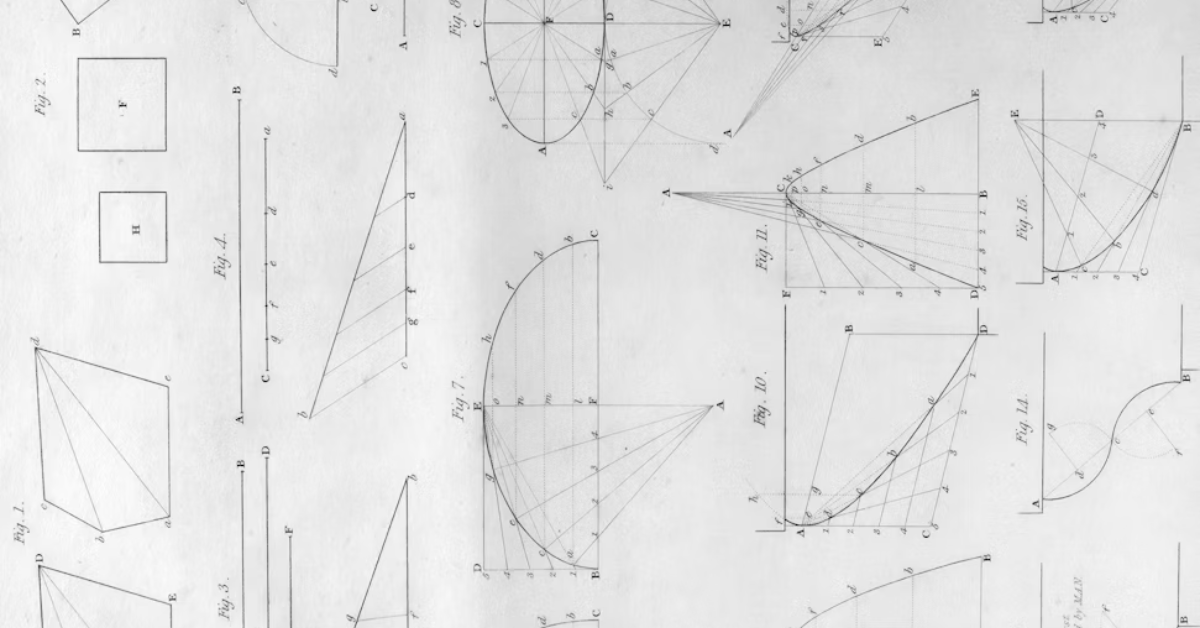Ratio and Proportion is a key topic in the Quantitative Aptitude section of SSC CGL and SSC CHSL exams, with about 4–5 questions asked in both Tier 1 and Tier 2. It often overlaps with topics like percentages, mixtures, and time-work. This blog includes SSC CGL 2025-level questions to help improve your speed, accuracy, and exam readiness.
Tips and Tricks to Solve Ratio and Proportion Questions
Ratio and proportion problems are scoring if approached with the right methods. Use the tips below to solve such questions quickly and accurately in SSC CGL:
- Understand basic ratio concepts thoroughly (part-to-part and part-to-whole)
- Convert word problems into numerical expressions using ratios
- Always simplify ratios to their lowest terms before solving
- Use cross-multiplication for proportion-based equations
- Practice compound ratio and continued proportion regularly
- Be cautious with units while comparing quantities
- Work on time-saving methods like ratio chains and fractions
Mistakes Every Exam Student Makes in Ratio and Proportion Questions
Every year, many SSC CGL aspirants lose marks in ratio and proportion questions due to small yet costly errors. Understanding these mistakes can help you avoid them during the exam:
- Confusing ratios with fractions and applying wrong operations
- Ignoring unit consistency when comparing two quantities
- Not simplifying ratios before calculations leads to complex numbers
- Wrong interpretation of ratio-based word problems
- Mixing up part-to-part and part-to-whole relationships
- Errors in applying cross-multiplication in proportions
- Overlooking hidden ratios in compound scenarios
SSC CGL Ratio Proportion Questions
- A company reduced its staff in the ratio 5:3 due to cost-cutting, but increased the average salary per employee in the ratio 7:8. If the company still managed to save Rs. 55,000, what was the initial total expenditure?
(a) Rs. 1,75,000
(b) Rs. 1,55,000
(c) Rs. 2,15,000
(d) Rs. 1,60,000
Answer: (a) - A sum of Rs. 8400 was divided among A, B, and C in the ratio of 6:8:7. If their savings were in the ratio 3:2:4 and B saved Rs. 400, then what is the ratio of their expenditures?
(a) 9:14:10
(b) 12:7:9
(c) 6:8:7
(d) 8:6:7
Answer: (a) - The ratio of the number of orange, pineapple, and mixed fruit juice cans in a store is 8:9:15. After selling 25%, 33.33%, and 20% of them respectively, what is the new ratio of the remaining stock?
(a) 12:15:19
(b) 6:6:13
(c) 4:9:13
(d) 1:1:2
Answer: (a) - A bag contains coins in denominations of Rs.1, Rs.2 and Rs.5 in the ratio of 4:5:6. If the total amount in the bag is Rs. 450, then what is the number of Rs.2 coins?
(a) 25
(b) 30
(c) 45
(d) 50
Answer: (d) - The salaries of A, B and C are in the ratio 4:5:6. If the total salary is Rs. 90,000, how much more does C earn than A?
(a) Rs. 10,000
(b) Rs. 8,000
(c) Rs. 12,000
(d) Rs. 15,000
Answer: (c) - A and B together can do a piece of work in the ratio of efficiencies 4:5. If A alone can complete the work in 20 days, in how many days can B alone do the same work?
(a) 16
(b) 18
(c) 25
(d) 22
Answer: (c) - The population of a town was in the ratio 3:4:5 for men, women, and children respectively. If the total population is 9600, how many women are there?
(a) 2400
(b) 3200
(c) 4000
(d) 3600
Answer: (b) - The ratio of present ages of a father and his son is 7:2. After 10 years, the ratio will be 9:4. What is the present age of the son?
(a) 14 years
(b) 16 years
(c) 18 years
(d) 20 years
Answer: (a) - A sum of Rs. 12,600 is divided among P, Q, and R such that the amount received by P is 1.5 times that of Q, and Q gets 80% of what R gets. What is Q’s share?
(a) Rs. 3000
(b) Rs. 3200
(c) Rs. 3600
(d) Rs. 4000
Answer: (b) - A can do a work in 20 days, and B can do it in 30 days. They work together for 6 days and then A leaves. In how many more days will B finish the remaining work alone?
(a) 4 days
(b) 5 days
(c) 6 days
(d) 7 days
Answer: (b) - A certain number is divided into two parts in the ratio 5:3. If the difference between the parts is 48, what is the number?
(a) 192
(b) 240
(c) 216
(d) 256
Answer: (b) - The monthly incomes of two persons are in the ratio 9:7, and their expenditures are in the ratio 4:3. If both save Rs. 4000 per month, what is the income of the first person?
(a) Rs. 18,000
(b) Rs. 21,600
(c) Rs. 24,000
(d) Rs. 27,000
Answer: (c) - If 3A = 4B and 5B = 6C, then find the ratio A:C.
(a) 2:3
(b) 5:8
(c) 10:9
(d) 1:1
Answer: (b) - The ratio of boys to girls in a school is 5:4. If 20 more girls join the school and 10 boys leave, the ratio becomes 9:8. Find the original number of girls.
(a) 160
(b) 180
(c) 200
(d) 220
Answer: (b) - A sum of Rs. 720 is divided between A and B in the ratio 5:3. If B gives Rs. 30 to A, what will be the new ratio of A to B?
(a) 6:3
(b) 7:2
(c) 8:3
(d) 9:2
Answer: (c) - A mixture of milk and water contains 80% milk. If 4 litres of water is added to the 20-litre mixture, what is the new ratio of milk to water?
(a) 4:1
(b) 5:2
(c) 2:1
(d) 5:3
Answer: (d) - The ratio of ages of A and B is 3:2. After 5 years, their ages will be in the ratio 4:3. What is A’s present age?
(a) 15
(b) 18
(c) 21
(d) 24
Answer: (c) - A bag contains red, blue, and green balls in the ratio 2:3:5. If there are 40 green balls, how many total balls are there in the bag?
(a) 80
(b) 100
(c) 120
(d) 150
Answer: (c) - A train covers the same distance in the ratio of time 2:3 compared to a bus. If the train travels at 60 km/h, what is the speed of the bus?
(a) 40 km/h
(b) 45 km/h
(c) 50 km/h
(d) 55 km/h
Answer: (a) - A pipe fills a tank in 15 hours and another can empty it in 20 hours. If both are opened together, in how much time will the tank be full?
(a) 60 h
(b) 65 h
(c) 70 h
(d) 75 h
Answer: (d) - If the cost of 12 pens is equal to the cost of 8 books, find the ratio of cost of a pen to that of a book.
(a) 3:2
(b) 2:3
(c) 1:2
(d) 2:1
Answer: (a) - A recipe needs ingredients A, B and C in the ratio 2:3:4. If a chef uses 300g of B, how much of C is required?
(a) 350g
(b) 400g
(c) 500g
(d) 600g
Answer: (c) - A sum of money is to be distributed among A, B, and C in the ratio 3:4:5. If C gets Rs. 1500 more than A, what is the total amount?
(a) Rs. 6000
(b) Rs. 6500
(c) Rs. 7000
(d) Rs. 7500
Answer: (d) - If two numbers are in the ratio 7:5 and their LCM is 210, what is their HCF?
(a) 6
(b) 10
(c) 15
(d) 30
Answer: (c) - In a school, the number of students in Classes A and B are in the ratio 3:5. If 10 students from Class B are shifted to Class A, the new ratio becomes 1:1. What is the original number of students in Class B?
(a) 40
(b) 50
(c) 60
(d) 80
Answer: (c) - The incomes of two persons are in the ratio 11:9 and their expenditures are in the ratio 4:3. If each saves Rs. 4000, find the income of the person with lower income.
(a) Rs. 18,000
(b) Rs. 20,000
(c) Rs. 22,000
(d) Rs. 24,000
Answer: (b) - Two numbers are in the ratio 4:5. If 4 is subtracted from both, the ratio becomes 3:4. What are the numbers?
(a) 24, 30
(b) 28, 35
(c) 36, 45
(d) 40, 50
Answer: (a) - A mixture of 60 litres contains milk and water in the ratio 2:1. How much water should be added to make the ratio 1:1?
(a) 10 L
(b) 15 L
(c) 20 L
(d) 30 L
Answer: (b) - A and B together can complete a task in 8 days. If A alone can do it in 12 days, in how many days can B complete it alone?
(a) 18
(b) 20
(c) 24
(d) 30
Answer: (c) - If A:B = 3:4 and B:C = 2:5, then find A:B:C.
(a) 3:4:10
(b) 3:2:5
(c) 6:8:15
(d) 3:5:7
Answer: (c)
Ans. On average, 3–5 Ratio and Proportion questions appear in SSC CGL Tier 1 and Tier 2 combined, often in connection with percentages, time-work, and mixtures.
Ans. In Tier 1, questions are easy to moderate, mostly concept-based. In Tier 2, they can be moderate to high-level with mixed concepts like ages, time-work, or profit-loss.
Ans. Common types include income-expenditure problems, age-based questions, mixtures, work efficiencies, and distribution of money or quantity.
Ans. Yes, this topic is important for SSC CHSL, CGL, GD, MTS, and even Banking and Railways exams. It overlaps with other arithmetic topics.
Ans. Not many formulas are needed. Understanding basic ratio concepts, proportion rules, and fraction equivalency is more important.
- RBI SO Syllabus and Exam Pattern 2025 for Grade A and B
- RBI SO Eligibility 2025, Check Qualification & Age Limit
- RBI SO Exam Date 2025, Check Phase 1 Schedule for Grade A/B
- RBI SO Apply Online 2025 Before 31st July for 28 Vacancies
- RBI SO Notification 2025 Out for 28 Vacancies of Grade A & B
- Free SSC CHSL Topic Wise Tests for English, Quant & More, Attempt Now

Hello there! I’m a dedicated Government Job aspirant turned passionate writer & content marketer. My blogs are a one-stop destination for accurate and comprehensive information on exams like Regulatory Bodies, Banking, SSC, State PSCs, and more. I’m on a mission to provide you with all the details you need, conveniently in one place. When I’m not writing and marketing, you’ll find me happily experimenting in the kitchen, cooking up delightful treats. Join me on this journey of knowledge and flavors!
